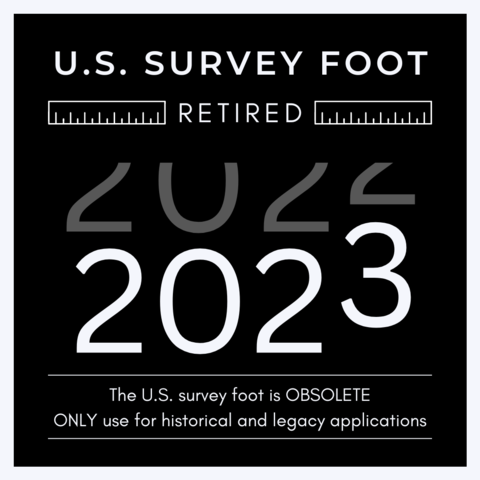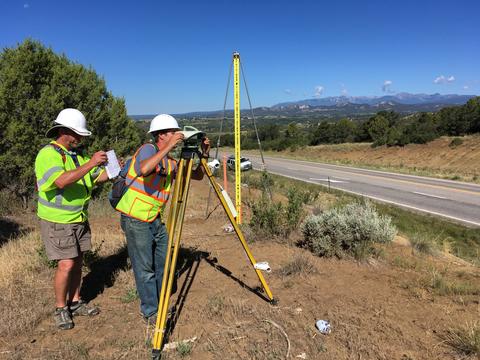
At the stroke of midnight on January 1, 2023, the U.S. survey foot was deemed obsolete and the international foot (i.e., 1 foot = 0.3048 meter exactly) definition officially superseded the U.S. survey foot. This retirement has been planned by National Oceanic and Atmospheric Administration (NOAA) and NIST for several years to provide national uniformity in the measurement of length. Prior to this date, several traditional linear, area, and volume surveying measurement units were only defined in terms of the U.S. survey foot. With this update, relationships are available in terms of the international foot (also known simply as the “foot”).
The preferred measurement unit of length in the United States is the meter (m) and surveyors, map makers, and engineers are encouraged to adopt the International System of Units (SI) for their work. To facilitate this transition, SI equivalents have been adopted and published in the Federal Register, online, and within NIST Handbook (HB) 44 (Appendix C, General Tables of Units of Measurements) and will be published within upcoming editions of NIST Special Publication (SP) 811, The NIST Guide for the use of the International System of Units and NIST Handbook 133 (Appendix E, General Tables of Units of Measurement). Surveying and mapping applications that use the “foot” and “meter” will become more prevalent over time. NIST OWM would like to recognize the significant contributions of Dr. Michael Dennis, Geodesist (NOAA, National Geodetic Survey) to revise these NIST publications to ensure the orderly retirement of the U.S. survey foot from the U.S. measurement system.

Why make this adjustment now? The U.S. survey foot retirement corrects a measurement dilemma that has persisted for over 60 years. From 1893 until 1959, the yard was defined as equal exactly to 3600/3937 meter. In 1959, a small change was made in the definition of the yard to resolve discrepancies both in the United States and abroad. Based on this decision, the 1893 definition of the foot was named the “U.S. survey foot,” while the foot definition adopted in 1959 was called the “international foot.” At the time, it was mandated that the U.S. survey foot only be used for geodetic surveying and that it would ultimately be replaced by the international foot. The retirement of the U.S. survey foot facilitates the NOAA National Geodetic Survey modernization of the National Spatial Reference System, related datum updates, and supporting products and services improvements.
Interested in learning more? A recording of NOAA’s Changes Afoot After 2022: State Plane and the Death of the U.S. Survey Foot (November 10, 2022) webinar provided an overview on the status of the State Plane Coordinate System of 2022 (SPCS2022) and guidance on making a smooth transition to the international foot. During the webinar, Dr. Dennis noted that SPCS2022 will not be released until 2025, along with the rest of the modernized National Spatial Reference System. For more information visit the U.S. Survey Foot website, explore the Frequently Asked Questions, consult the Getting Prepared Tips (including template state legislation), and review the Federal Register Notice (October 5, 2020, 85 FR 62698). For questions, please contact Dr. Michael Dennis (Michael.dennis [at] noaa.gov (Michael[dot]dennis[at]noaa[dot]gov)) and Elizabeth Benham (TheSI [at] nist.gov (TheSI[at]nist[dot]gov)).
This article was originally published in October 2020 and has been revamped and re-published here.

